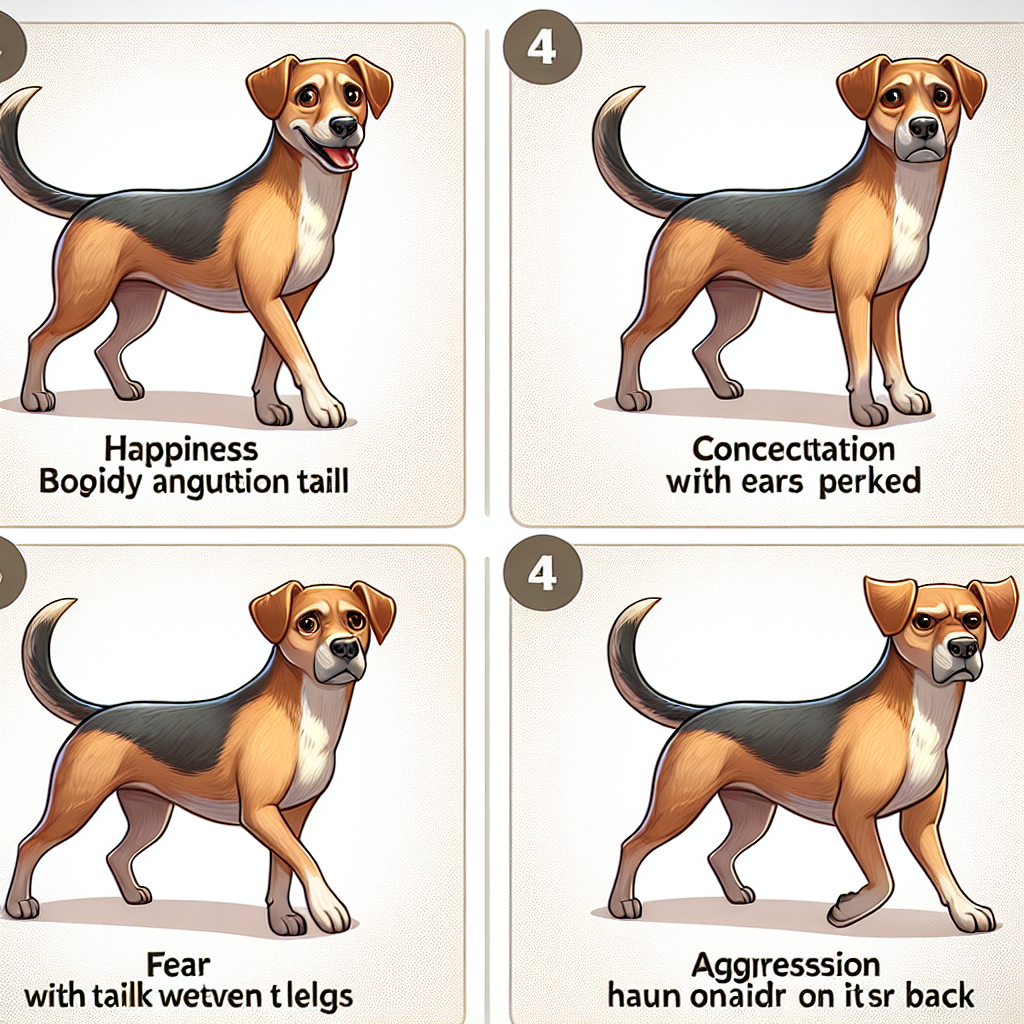Understanding Canine Communication
Communication is an essential part of any relationship, including the one you share with your furry friend. Dogs have their unique ways to convey happiness, fear, stress, and affection. Understanding your dog's communication can deepen your bond and ensure your pet's well-being.
Deciphering Dog Body Language
Contrary to humans, dogs communicate primarily through body language. Their tail wags, facial expressions, body postures, eyes, and ears tell a lot about what's on their mind. Here are some typical dog body cues.

- Relaxed Posture: A dog that is calm, content, and comfortable, often stands with a relaxed posture, tail slightly down, and ears up but not forward.
- Aggressive Posture: An aggressive dog may show signs such as a rigid body, raised tail, flattened ears, staring eyes, and bared teeth. Explore more on our link about Aggression Resolution.
- Fearful Posture: A scared dog may try to make itself as small as possible or may put its tail between its legs. It may also exhibit widened eyes and laid-back ears. Visit our page on Unusual Dog Behaviors Explained for more details.
Vocalization in Dogs
Dogs also communicate using vocal cues. Barking, whining, growling, yelping, and howling can indicate a variety of emotional states or needs. Understanding these sounds can help you respond to your dog's behavior effectively. Check out this helpful guide on understanding Dog Body Language.
Common Misconceptions in Canine Communication
Many dog behaviors are misunderstood by their human companions, which can lead to miscommunication. For instance, a wagging tail doesn't always mean a happy dog; it might signal aggression or anxiety. Also, a dog showing its belly doesn't evoke submission alone; it can be a sign of trust and comfort too.
Improving Communication
Improving communication with your dog is not one-way; it requires reciprocal understanding. Training plays a crucial role in this. Using positive reinforcement methods can help you communicate effectively with your dog, leading to a better behaved canine companion.
Role of Scents and Pheromones
Dogs rely heavily on their sense of smell to communicate. Scents and pheromones can provide a wealth of information to dogs, including the emotional state, health status, and reproductive status of other dogs. So, sniffing is an important part of canine communication.
Decoding Canine Emotion
To be a good human companion to your furry friend, understanding their emotional state plays a vital role. Once you start picking up and properly interpreting their signals, you'll be able to respond better to their needs and ensure that they feel understood and loved.